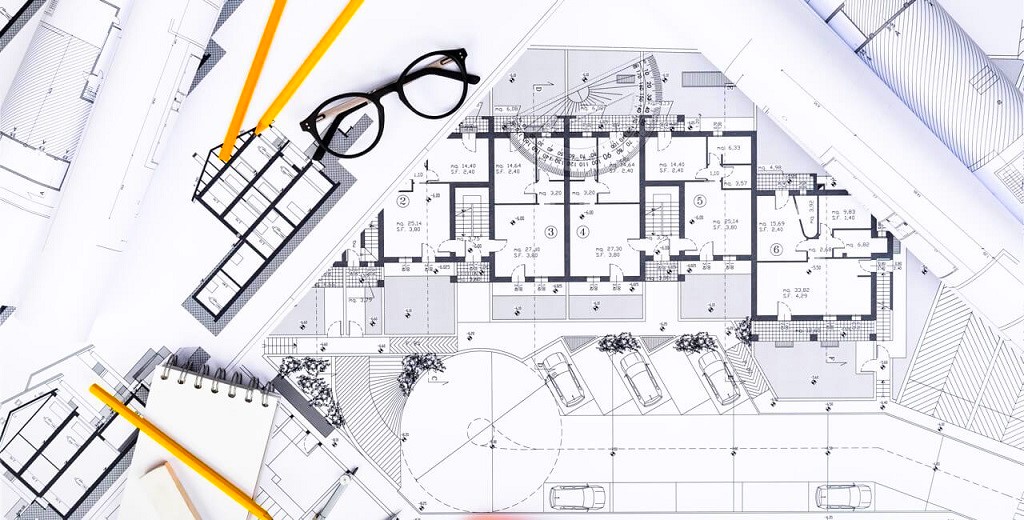QR codes, short for Quick Response codes, have become an integral part of our daily lives. From scanning a code on a restaurant menu to getting more information about a dish to using a QR code on a business card to save contact details, these little black and white squares are everywhere nowadays. QR codes have become ubiquitous in the world of marketing and advertising. But did you know that QR codes also make major inroads into the construction industry? With the help of a QR code generator, construction companies can easily create and track inventory, equipment, and even employee information.
From tracking materials to safety protocols, QR codes change how construction projects are planned and executed. Read on to learn more about the varied uses and benefits of QR codes in construction.
Streamline Communication System
Clear and efficient communication is crucial in any construction project with multiple teams working together. However, trying to keep everyone on the same page via emails and phone calls can be time-consuming and lead to miscommunication. This is where QR codes come in.
By placing QR code stickers or signs on equipment, materials, and locations around a construction site, workers can quickly scan the codes to access the latest updates, instructions, schematics, and more. The codes can link to PDFs hosted in the cloud or internal databases. No more waiting for an emailed document or playing phone tag. Workers get real-time information right when and where they need it.
QR codes also facilitate smoother communication across language barriers. Scanning a code can pull up instructions, safety procedures, and training materials in multiple languages, ensuring non-native speakers have access to the same information as everyone else.
Track Inventory
Keeping tabs on tools, equipment, and building materials is another challenge in construction projects. Items get misplaced, used up, or moved around frequently. With QR code asset tracking, every physical item can have a unique QR code sticker that workers scan to monitor where it is and when it was last inspected or maintained.
Cloud-based asset tracking software syncs with the QR code scans, providing inventory reports and sending alerts when supplies run low or maintenance is due. This prevents wasted time spent searching for misplaced items or assets falling through the cracks.
Manage Teams and Subcontractors
Large construction projects often involve numerous subcontractors working together in phases. Keeping subcontractor teams coordinated is hugely important for staying on schedule. QR codes help streamline subcontractor management.
Main contractors can provide each subcontractor with a customized QR code that links to a digital project hub with their scope of work, timeline, specifications, approvals, and other relevant information. Subcontractors scan the code to get updates or submit questions as needed rather than relying on back-and-forth emails and calls with the contractor.
QR codes facilitate easy check-in and check-out at worksites using QR login screens. This provides oversight into what subcontractors are onsite and logs hours worked.
Optimize Inspections
Inspections are required at various stages of construction projects to ensure work meets specifications and complies with building codes. Inspectors must document their reviews thoroughly with notes, photos, checklists, and more.
Rather than relying on paper inspection reports, inspectors can scan a QR code for each area or component being inspected. This automatically pulls up the relevant digital reporting templates to streamline documentation. Photos, notes, and completed checklists are uploaded to the project drive or inspector dashboard in real-time.
QR inspection codes optimize organization, standardization, transparency, and information sharing between inspectors, contractors, and project managers. Any issues or action items get flagged immediately for faster resolution.
Enhance Safety
QR codes boost safety across construction sites in a few key ways. First, safety managers can place QR code signs around a site that workers or visitors can scan for quick access to emergency contacts and procedures, safety videos, equipment operating instructions, SDS sheets, and other critical information needed in case of an accident or injury.
Second, QR codes can be integrated with digital check-in procedures and safety training protocols. Workers may need to pass certain safety courses and digitally sign off on safety policies to get approved access to a worksite. The entire onboarding process can be automated using QR codes rather than paper forms.
Additionally, QR codes link to digital safety inspection checklists that managers must complete at scheduled intervals. Required PPE and equipment can also have QR code labels linking to maintenance logs and expiration dates. Keeping safety in mind is critical in construction, and QR codes facilitate more organized and robust safety protocols.
Optimize Quality Control
Strict quality control measures are necessary throughout the construction process to avoid mistakes and deliver high-quality results on schedule and budget. There are ample ways QR codes enhance quality control.
First, key materials and components can have unique QR codes that workers scan during installation. This automatically logs the install date, batch numbers, inspector name, and related documentation for traceability.
Second, managers and inspectors can scan QR codes to pull up digital quality checklists and quickly document any issues identified or corrections needed directly onsite. The checklists get uploaded to the cloud for transparency.
Finally, QR codes linked to feedback surveys allow project managers to get real-time, site-specific feedback from workers to identify quality issues and areas for improvement. The immediacy of information sharing via QR codes gives managers better oversight.
Simplify Training
Regular staff training is essential on construction jobsites where safety is paramount. It helps ensure employees follow proper protocols and operate equipment safely. QR codes streamline the organizing and tracking of both initial and ongoing employee training.
QR codes can link to training materials like videos, manuals, presentations, and exams. Workers scan codes near equipment or in designated training areas to access training content. The training software can then log their completion for compliance reporting.
For multi-language workforces, QR codes provide training materials in every necessary language with one scan. Overall, digitizing tutorials and records with QR codes reduces reliance on in-person instructors and paper documentation.
Boost Sustainability
Sustainable construction relies on careful tracking and coordination of materials, waste, energy use, and more. QR codes boost sustainability in a few ways. First, all inventory items, including recyclables, can have a QR code to monitor supply chain management better. Second, QR inspection checklists include sustainability criteria for more comprehensive reviews.
Additionally, QR codes placed on waste bins around the site allow workers to log waste quickly. The QR code links to an online form where they input quantities, types, disposal methods, etc. This waste audit data helps identify areas for reducing environmental impact. It gets cumbersome to record this information manually, but QR codes simplify the process.
Marketing to Prospects
QR codes are not just useful during construction projects – they also help contractors market completed projects. By placing a QR code plaque or sign outside finished buildings, passersby can easily scan for details about the project, builder information, photos, floorplans, and more.
This helps contractors showcase their work and provides an easy onsite calling card. It is far more accessible for prospects than trying to remember a website URL or search for the company later. The QR code drives traffic directly to relevant, project-specific marketing content.
In summary, implementing QR codes in construction workflows provides myriad benefits:
- Simplifies onsite communication and information sharing
- Tracks inventory and assets in real-time
- Manages subcontractor teams and improves coordination
- Optimizes inspections, quality control, and safety protocols
- Streamlines training and sustainability initiatives
- Provides accessible project marketing to prospects
The portability, scannability, and versatility of QR codes drive productivity and transparency across construction projects, both big and small. As technology evolves, builders can leverage QR codes in even more ways. The construction industry is just beginning to tap into the possibilities.
FAQs
How are QR codes generated?
QR codes can be generated through free online QR code generators or paid software programs. Users enter the URL, text, phone number, or other data to be encoded. The generator then converts this into a unique QR code image. Many QR code software platforms provide additional tools for customizing, tracking, and managing QR codes.
Can QR codes expire?
Yes, QR code creators have the option to set an expiration date. The code will no longer work after that set date. This is useful if QR codes are for a limited event or promotion. It also ensures that QR codes stay up-to-date if information changes. Users trying to scan an expired code will be notified that the code is no longer valid.
Can QR codes store large amounts of data?
QR codes have the capacity to store several thousand characters of alphanumeric data. This could include long website URLs, Excel sheets, PDF documents, images, videos, etc. However, the more data encoded, the more complex the QR code pattern. Overly complex codes may be difficult for phones to read. So, it is best to keep the encoded data concise.
Can QR codes be reused and edited once created?
One of the benefits of QR codes is that the content behind them can be edited even after generation. So creators can update linked URLs, documents, text, etc. The QR code image itself remains the same. This allows for reusable QR codes that always link to the latest information.
How can construction companies track QR code metrics?
Many QR code programs provide built-in analytics about scan volume, geography, timing, sources, and other metrics. Companies can check the usage reports to determine the most popular QR codes and how people utilize them. This helps inform future QR code strategy.
Tags: first use of qr code, Use of QR Code in Construction, use of qr code in education, what is the use of qr code in contacts, what is use of qr code




Leave a Reply